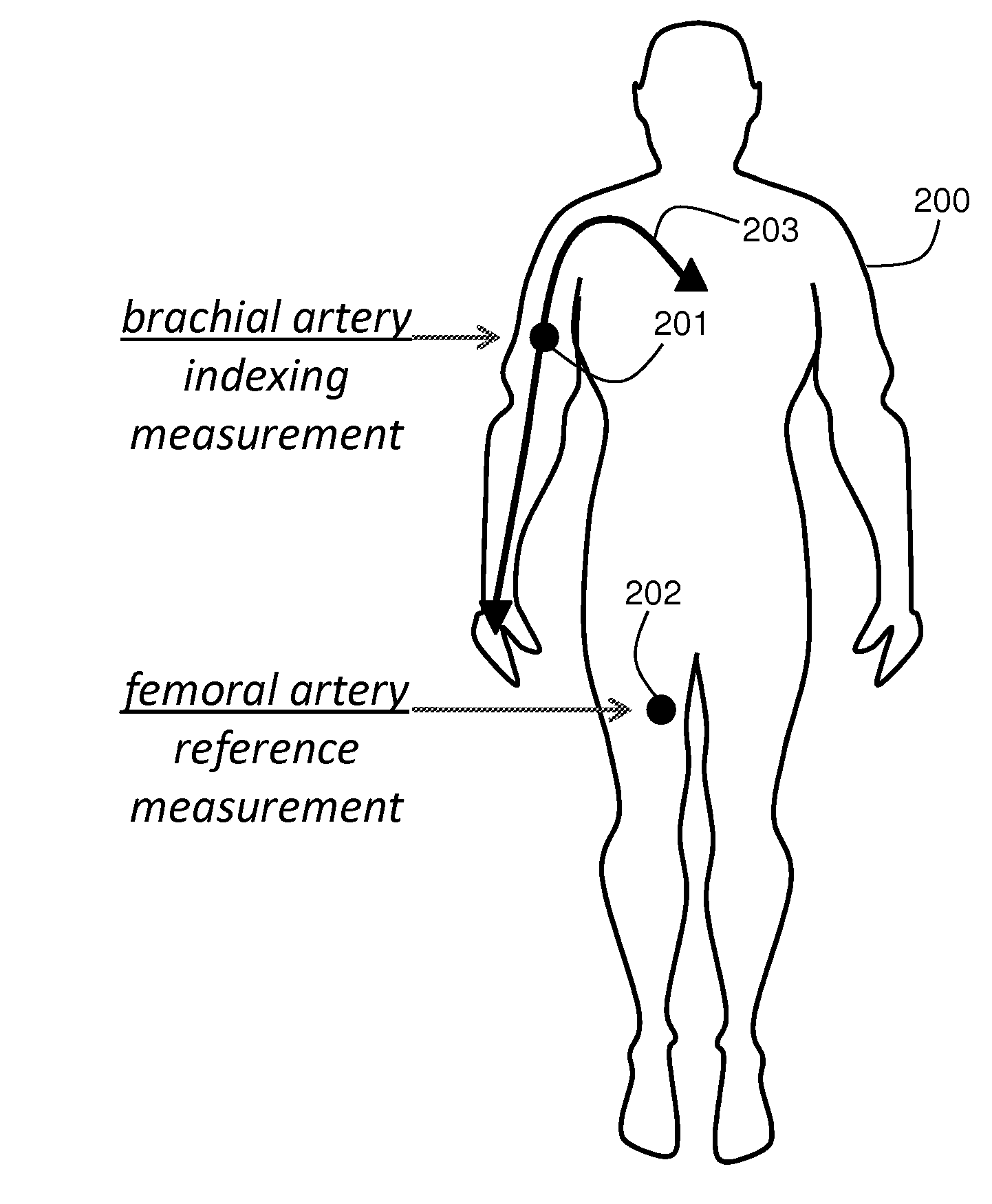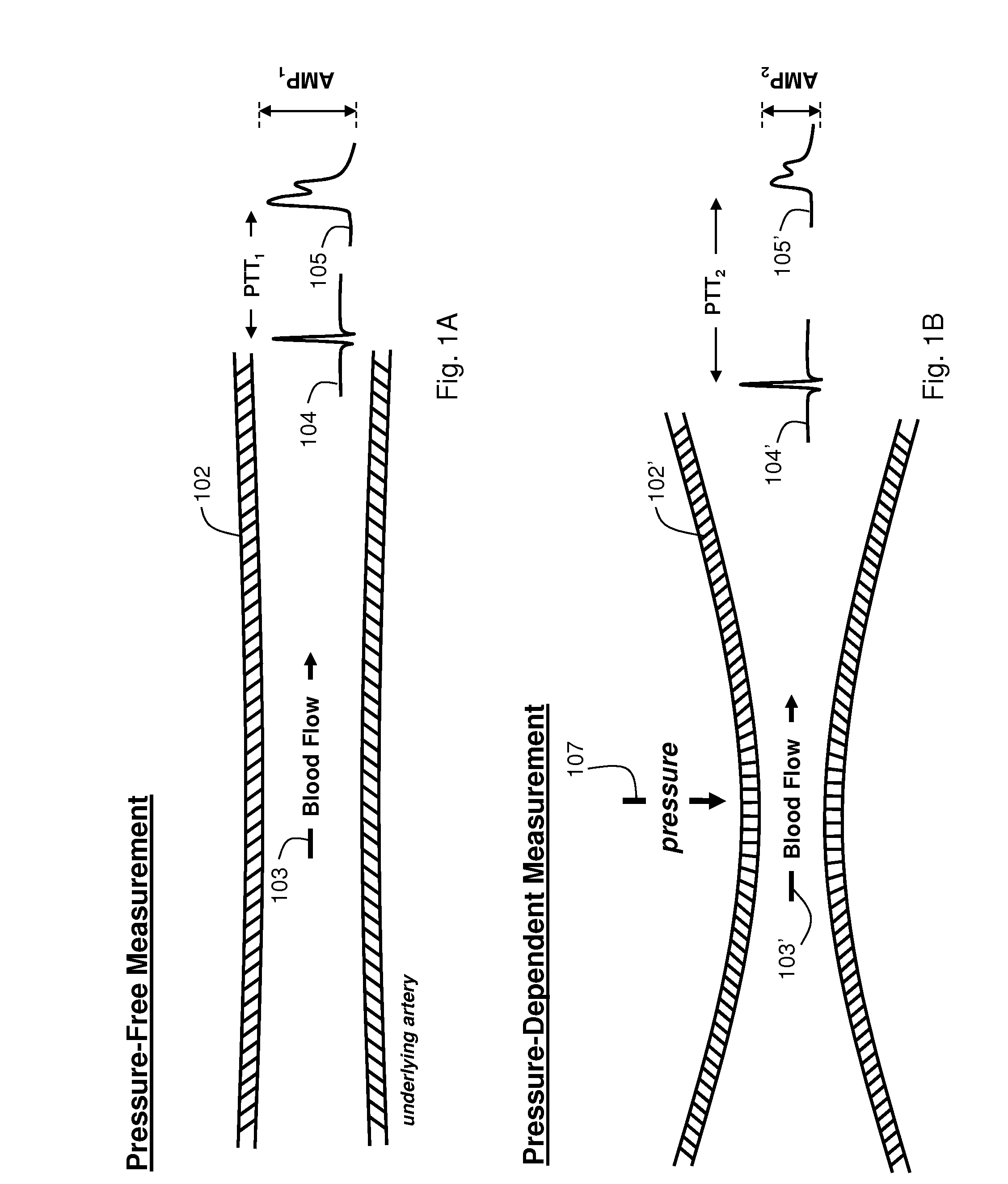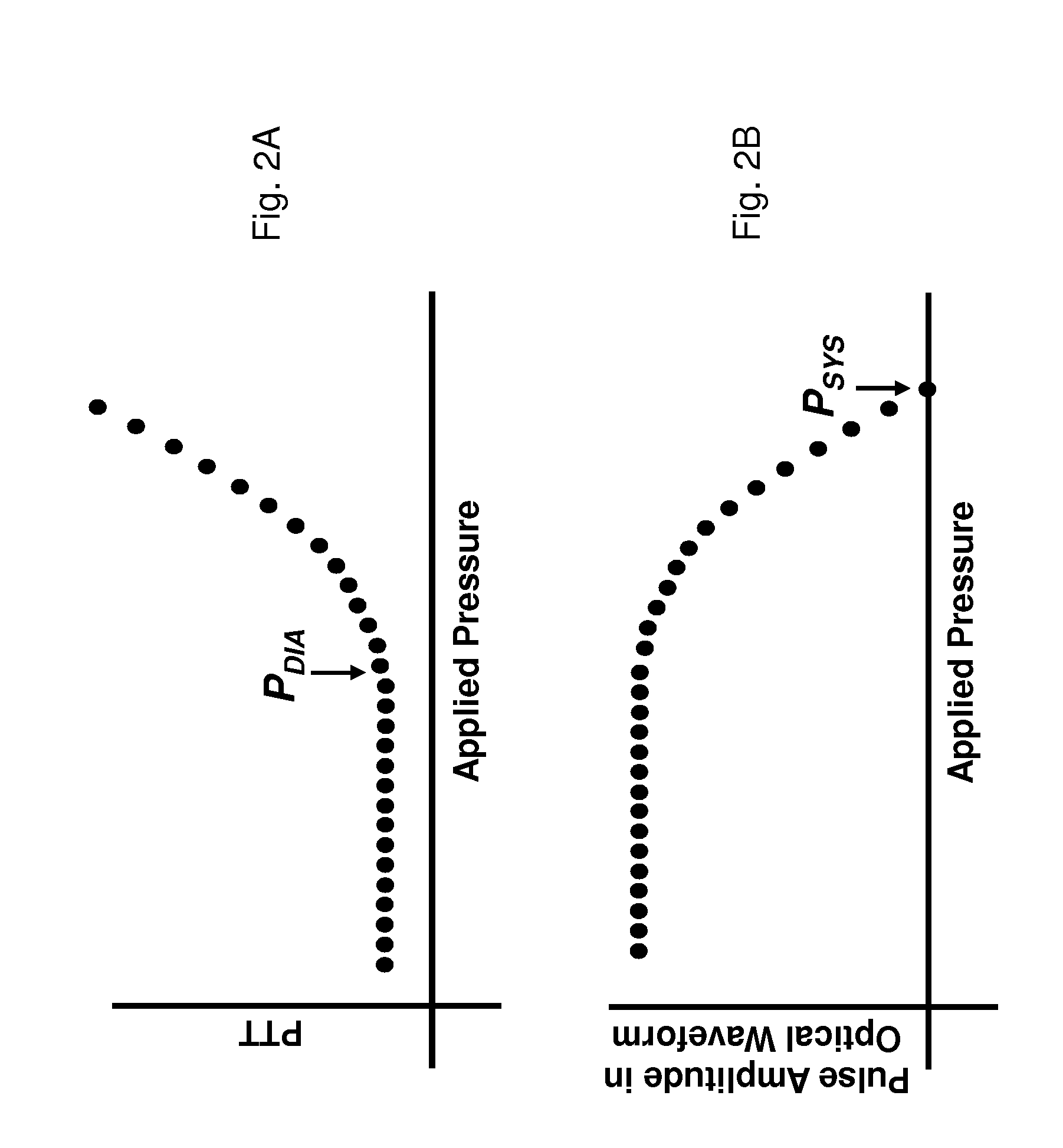BODY-WORN SYSTEM FOR MEASURING CONTINUOUS NON-INVASIVE BLOOD PRESSURE (cNIBP)
a non-invasive, body-worn technology, applied in the direction of bioelectric signal measurement, medical science, diagnostics, etc., can solve the problems of no longer measurable ptt and amplitude of ppg waveform, and achieve fast and comfortable, low cost, and low cost
- Summary
- Abstract
- Description
- Claims
- Application Information
AI Technical Summary
Benefits of technology
Problems solved by technology
Method used
Image
Examples
Embodiment Construction
Theory of the Composite Method
[0060]FIGS. 1A and 1B show schematic drawings of the Composite Method's pressure-free (FIG. 1A) and pressure-dependent (FIG. 1B) measurements. Working in concert, these measurements accurately determine the patient's cNIBP for an extended time without requiring an external calibration device, e.g., a conventional blood pressure cuff. During a measurement, the patient wears a body-worn monitor attached to a disposable cuff and collection of optical, electrical, motion, and temperature sensors. These sensors measure signals for both the pressure-dependent and pressure-free measurements. The co-pending patent applications, the contents of which are fully incorporated herein by reference, describe earlier embodiments of this measurement: DEVICE AND METHOD FOR DETERMINING BLOOD PRESSURE USING ‘HYBRID’ PULSE TRANSIT TIME MEASUREMENT (U.S. Ser. No. 60 / 943,464; filed Jun. 12, 2007); VITAL SIGN MONITOR FOR CUFFLESSLY MEASURING BLOOD PRESSURE USING A PULSE TRANSI...
PUM
 Login to View More
Login to View More Abstract
Description
Claims
Application Information
 Login to View More
Login to View More - R&D
- Intellectual Property
- Life Sciences
- Materials
- Tech Scout
- Unparalleled Data Quality
- Higher Quality Content
- 60% Fewer Hallucinations
Browse by: Latest US Patents, China's latest patents, Technical Efficacy Thesaurus, Application Domain, Technology Topic, Popular Technical Reports.
© 2025 PatSnap. All rights reserved.Legal|Privacy policy|Modern Slavery Act Transparency Statement|Sitemap|About US| Contact US: help@patsnap.com



